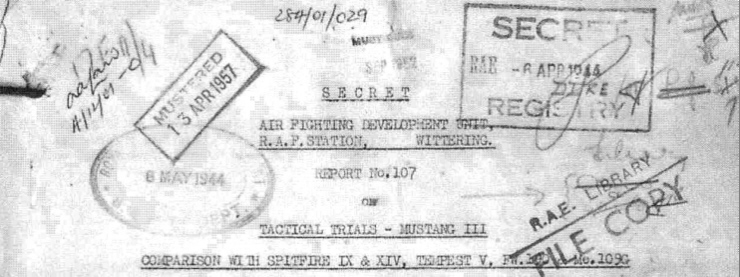I was working with a guy who flies the P-47s as his MA ride. He's been going through a flat spot (all pilots hit these bumps in the virtual road from time to time) and wanted to work on his ACM. We began flying the P-47D-11. After an few duels, I took a D-25 trying to even out things a bit as he was struggling some. Not even enough. So, I grabbed a P-51D.
If I flew a pure E fight, the P-51D was perfectly adequate. However, if I dumped flaps and maneuvered, the Mustang was badly outclassed by the D-11. I switched to the P-51B and there was little improvement.
This was really bothering me. Flaps out, the P-51s are absolute pigs. Indeed, the P-51B has a turn radius that is nearly 70 feet greater than the P-47D-11.
Consider that a low fuel P-51B (25% gas) weighs right around 9,000 lb and the P-47D-11 (25% gas) weighs about 12,200 lb.
This results in respective wing loadings of:
P-51B: 38.59 lb per sq/ft
P-47D-11: 40.66 lb per sq/ft
Even with flaps up, the P-47D-11 out-turns the P-51B. That simply should not be the case.
P-51s and P-47s have a similar maximum coefficient of lift.
P-51B: 1.89
P-47D: 1.93
If we take the wingloading and divide it by the co-efficient of lift, we have a reference indicator of turning ability.
So, for the P-51B: 38.59/1.89 = 20.42
For the P-47D-11: 40.66/1.93 = 21.07
Thus, the P-47's turn radius should be 103% of that of the P-51B (clean, no flaps).
Unfortunately, in the game it's backwards.
P-51B turn radius, clean: 758.2 feet
P-47D-11 radius, clean: 748.4 feet
Thus, the P-51B's turn radius is 101.3% of that of the P-47D-11.
So, in AH2, the P-47D-11 turns slightly smaller circles than the P-51B. Adding flaps in increments results in the P-47 gradually turning smaller circles until at full flaps, the difference in just short of 70 feet. This results in the P-51B turn radius being 113% of that of the P-47D-11.
From: wwiiaircraftperformance.org
 BRIEF TACTICAL COMPARISON WITH SPITFIRE XIV
BRIEF TACTICAL COMPARISON WITH SPITFIRE XIV
Maximum Endurance
25. By comparison the Spitfire XIV has no endurance.
Maximum speed
26. There is practically nothing to choose in maximum speed.
Maximum climb
27. The Spitfire XIV is very much better.
Dive
28. As for the Spitfire IX. The Mustang pulls away; but less markedly.
Turning Circle
29. The Spitfire XIV is better.
Rate of Roll
30. Advantage tends to be with the Spitfire XIV.
Conclusion
31. With the exception of endurance, no conclusions should be drawn, as these two aircraft should never be enemies. The choice is a matter of taste.
BRIEF TACTICAL COMPARISON WITH TEMPEST V
Maximum endurance
32. By comparison, the Tempest V has no endurance.
Maximum speed
33. The Tempest V is 15-20mph faster up to 15,000ft. There is then no choice until 24,000ft when the Mustang rapidly pulls ahead, being about 30mph faster at 30,000ft.
Maximum climb
34. These compare directly with the results of the speed tests. At similar performance height, the Tempest has the better zoom climb.
Dive
35. The Tempest tends to pull away.
Turning circle
36. The Tempest is not quite as good.
Rate of Roll
37. The Tempest is not so good. This attribute of the Tempest V may be improved upon in later aircraft.
Conclusions
38. The Mustang has endurance and general performance above 24,000ft. Conclusions should not be drawn below this height, but the Tempest has a better speed and climb below 10,000ft. Note that the AH2 Tempest out-turns both the P-47D-11 and the P-51B...
When the drag model was revised, the P-51s suffered a large hit to their turn radius, especially with flaps out. They went from reasonably capable to absolutely helpless in an instant. Only the Fw 190A-8 and F-8 have larger turn radii than the P-51D.
This is another thing that needs to be looked at. Our P-51s have lost much of their luster. I'm hoping that HTC looks at them again before Combat Tour debuts.
My regards,
Widewing